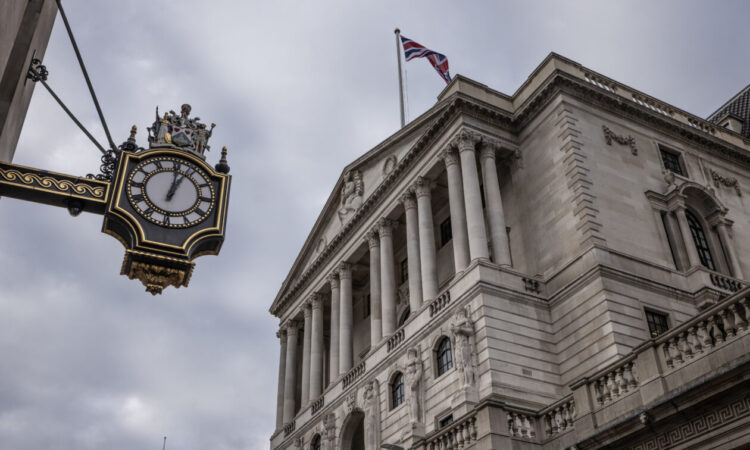Central bank digital assets can legitimize risk in the crypto space, says Standard Chartered’s Geoff Kendrick

After making waves in April with a prediction that Bitcoin would surge to US$100,000 by the end of 2024, Geoff Kendrick, crypto research chief at Standard Chartered Bank, insists there’s more to crypto than its most dominant digital asset.
But after the turmoil of the past year — the high profile collapse of stablecoin TerraUSD, the centralized exchange FTX and a trio of crypto-friendly banks — investors need reassurance that their digital assets won’t fall foul of any further meltdowns.
For Kendrick, that’s where greater regulation and the involvement of central banks come in.
He talked to Forkast’s Jenny Ortiz-Bolivar about the crypto industry beyond Bitcoin, his hopes for greater transparency in the industry and the acceleration of central bank digital currencies worldwide.
The Q&A has been edited for clarity and length.
Jenny Ortiz-Bolivar: You’ve predicted a surge in the price of Bitcoin. But beyond that, which of the altcoins are you keeping a close eye on?
Geoff Kendrick: Ethereum’s upgrades to proof-of-stake in September and, more recently, the Shanghai upgrade, mean that investors can remove coins that have been staked previously. Then there’s the addition of layer 2 solutions, meaning that speed and other concerns around Ethereum are basically a thing of the past. So I’d say Ethereum will continue to dominate.
In terms of the other altcoins, I like Solana. It had concerns linked to the FTX collapse in November, but it’s bounced back a bit since then. Some of the staking solutions like Lido are set to trade relatively well, particularly since the removal of some of those coins staked in Ethereum. We’ll probably see the likes of Lido continue to do well given what is a relatively low staked market at the moment in Ethereum versus its smart contract competitors. That will likely pick up over time.
Then, in terms of decentralized exchanges, the various concerns beginning in November mean that centralized exchanges are now marginally less trustworthy than they were before. As a result, I’d say decentralized exchanges like Uniswap should also trade well. So, big picture, I like Bitcoin, I like Ethereum, I like Lido on the staking point and I also like Uniswap to continue trading relatively well.
Ortiz-Bolivar: There’s a growing conversation, both positive and negative, around central bank digital assets. Where do you stand on this issue? Where will these assets fit in among stablecoins issued by private players?
Kendrick: Central bank digital assets are becoming really important for the crypto ecosystem. There are now a number of central banks around the world that are looking into them. The Bank of England in the U.K., for example, where I myself have been doing a lot of consultation work, expects to roll out its own digital asset within around two years from now.
If and when we have, for example, a Bank of England digital asset, that will legitimize some of the private sector stablecoins, working to then legitimize the broader risk space within crypto. That will probably also help lower volatility in the likes of Ethereum and Bitcoin as well.
I’d like to see central bank digital asset solutions arrive at the same time as regulatory solutions as this would then bring institutional money into the crypto space. If we then fast forward a couple of years from now, it’ll be much more normal for global investors to have part of their pension invested not only in bonds and stocks and commodities, but also in crypto markets, and the most liquid assets like Bitcoin and Ethereum in particular.
Ortiz-Bolivar: How do you view the privately-issued stablecoins that already feature in the digital asset market?
Kendrick: There have obviously been a number of concerns over the last 12 months or so, starting with the Terra-Luna collapse in May 2022. At that time, people started to question just how much cash was actually backing the other stablecoins, with investors becoming particularly concerned about Tether. More recently, the concern has been the US$3.3 billion held by Circle and USDC with Silicon Valley Bank. In that sense, it took concerns in the traditional financial sector itself to bring down, at least temporarily, USDC.
But the question going forward still remains how many dollars are actually backing these stablecoins. Essentially, we need more transparency, which would be fantastic for investor confidence. You’ll probably get regulations specifically around stablecoins soon as well, because even the U.S. Treasury has acknowledged that it’s needed. I actually suspect that’s where the first chunk of U.S. regulation is likely headed.
Ortiz-Bolivar: On the subject of regulation, we are now seeing the U.S. seem to throw away its position of relative advantage in the digital asset world. What do you make of U.S. crypto policy and the apparently adversarial nature of the Securities and Exchange Commission?
Kendrick: The U.S. response has been very, very slow. Unfortunately, the SEC has failed to take a proactive stance in terms of deciding what type of assets stablecoins are, among various other issues. In other countries, the U.K. for example, we have the Bank of England being relatively pragmatic in terms of talking to crypto users. In the EU too, we’ve had the MiCA regulation come through, which is great.
I would say over the next couple of years it’s more likely that crypto flows and companies move out of the U.S. to Europe given some of those regulatory positives we’ve got coming through. But, ultimately, the size and depth of the market in the U.S. means that if and when regulation comes, some of those European gains could be short lived.






